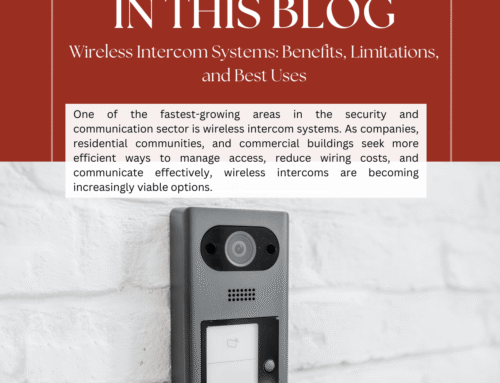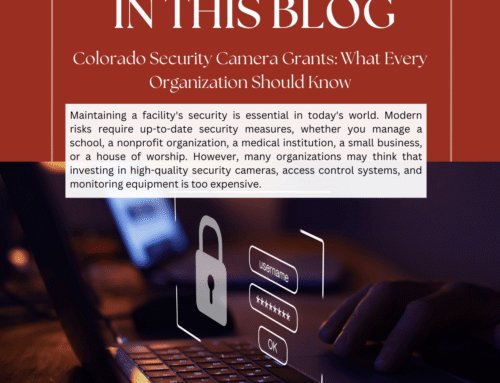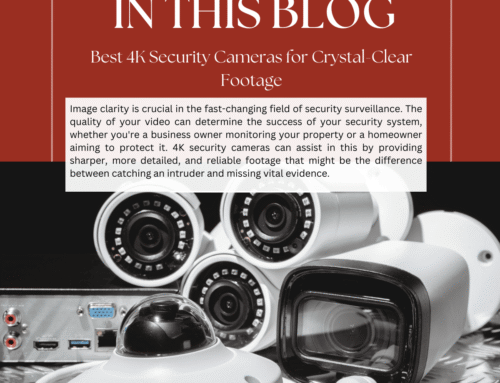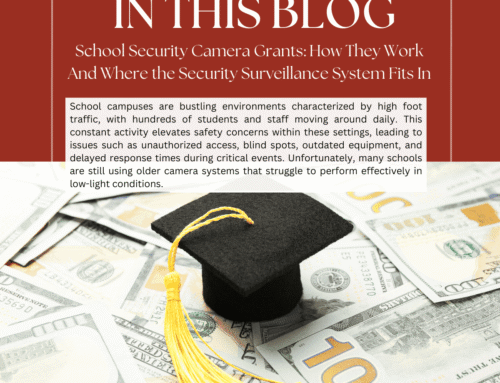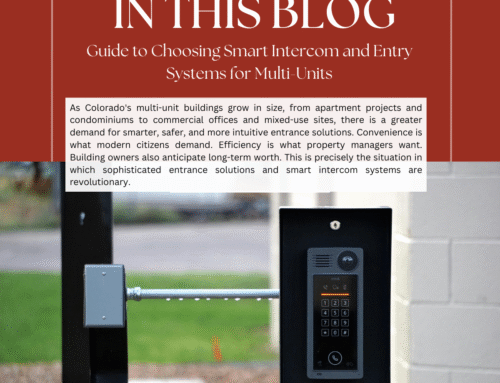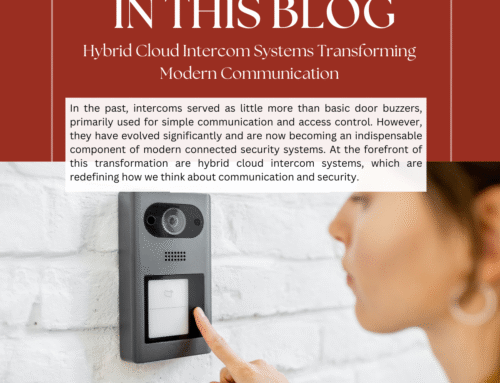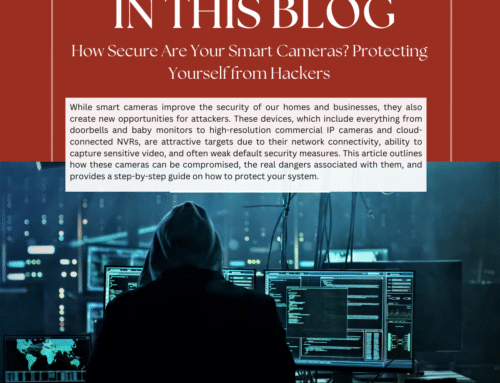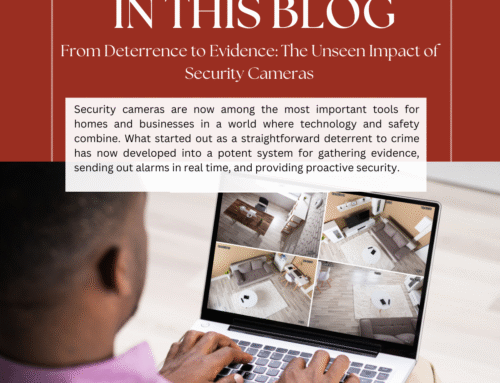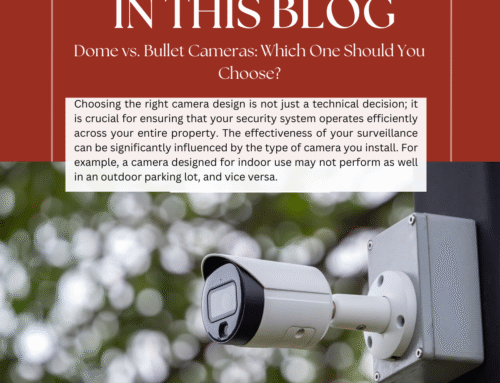RFID vs. NFC: Understanding the Key Technologies Behind Access Control
Access control systems are an essential line of defense for homes, businesses and industries in the rapidly changing world of security and surveillance. RFID (radio frequency identification) and NFC (near field communication) are two of the most well-known technologies utilized in contemporary access system. What defines them? Which is more suitable for your residence and commercial needs?
In this blog, we’ll explain the key distinctions between RFID and NFC, examine how they support safe spaces, and assists you in selecting the technology that best suits your access control requirements.
RFID: What is it?
RFID (Radio Frequency Identification) tracks and identifies tags that are affixed to item using electromagnetic fields. When an RFID reader is close by, the data stored on these tags is sent to it.
RFID types include:
- Short range, up to 10cm; low frequency (LF): 30 kHz to 300 kHz
- Medium range, up to 1 meter; high frequency (HF): 3 MHz to 30 MHz
- UHF, or ultra-high frequency, ranges from 300 MHz to GHz (up to 12 meters).
What is NFC?
High-frequency RFID includes NFC (Near Field Communication) as a subset. When devices are within 4 cm of one another, it permits two-way communication between them. The most well-known application of NFC is its ability to facilitate contactless smartphone payments.
RFID and NFC: Key Differences
| Features | RFID | NFC |
| Communication | One-way or two-way | Two-way only |
| Frequency | LF, HF, UHF | HF ONLY |
| Range | Up to 12 meters | Up to 4cm |
| Data speed | Faster over long distance | Optimized for short-range |
| Cost | Lower for basic tags | Slightly higher due to secure encryption |
| Device requirements | Reader + tags | Smartphones or HFC reader + tag |
Which is more effective for access control?
There are many security-related applications for both RFID and NFC. Your needs will determine which option is best for you:
If necessary, use RFID:
- long-range access, such as cars
- affordable tags for distribution in large quantities
- warehouses or industrial uses
if necessary, use NFC:
- modern, mobile-friendly access
- advanced data security and encryption
- personal short-range access (e.g., office doors, smart locks)
Statistics:
- In the next three years, integrating mobile access control is a high priority, according to 60% of security experts.
- By 2030, the worldwide RFID market is anticipated to grow to $40.5 billion.
- NFC payments are expanding quickly; in 2024 more than 2 billion NFC-enables devices were use globally.
- RFID is used by 81% of US businesses for inventory monitoring and staff access cards.
RFID And NFC Advantages for Your Security System
RFID benefits includes:
- High scalability for bigger buildings;
- Battery-free passive tags;
- Durability in severe situations.
- Able to deal with material such as wood and plastics.
NFC benefits includes:
- Better personal data encryptions;
- Simple smartphone integration;
- Perfect for co-working spaces, education institution, and medical facilities;
- Two-way communication support.
Understanding Access Control System: RFID Vs NFC
Using access control systems, managers and company owners may restrict which areas workers and other individual cam enter based on their individual credentials. In the same manner that access control systems come in a wider range of brands a variety, so do the ways in which they interact to provide access.
Near field communication (NFC) or radio frequency identification (RFID) technologies are used to open doors in non-biometric access control systems. You hold a card, fob, or other devices with an RFID or NFC tag implanted in it close to a sensor that scans the tag and decides whether or not you are permitted in. to the untrained eye, these appear to be identical.
These two choices do differ from one another, though. Even though RFID is an outdated technology, access control systems nevertheless make extensive use of it today. Because of advancement in its security characteristics, NFC, a more sophisticated kind of RFID, is becoming more and more widespread.
How Does It Operate?
Physical key cards or key fobs are included with RFID-based access control systems. These are sometimes referred to as tags, and each tag is uniquely identifiable each tags access parameter can be established by the system manager, who can then allocate them to staff members and guest.
Each tag stores its own data; the challenge is to get that data from the tag to the tag reader, which is where RFID enters the picture.
RFID systems are vulnerable to interference from electromagnetic fields. When numerous tags are in the same place or there are other magnetic devices nearby, interference occurs (a tag reader may attempt to read multiple tags at once producing difficulties). Someone can purposefully provide interference to jam the tag reader or even turn off the device altogether if they so want.
How Does NFC Operate?
NFC uses electromagnetic radio waves to transfer data between devices. Tags, a tag reader, and an access control panel are also components of NFC-based access control systems. Smartphone, key cards, and key fobs are example of NFC tags.
At least physically, an NFC access control system functions similarly on an RFID system. If you shoe the reader your tag, the door will unlock in a few seconds if you are allowed in.
Since NFC is more recent, it hasn’t born tested or used as extensively, which may be its sole true disadvantage. It may be potentially cost a bit more. Despite its well-known drawbacks, RFID is a tried and true technology. Because so many current RFID system are NFC compatible, the security sector is embracing NFC at a rapid pace.
What’s better, NFC or RFID?
There isn’t just one right response. Although they do it in different ways, access control system on RFID and NFC offer the same kind of security. Your particular demands will determine which platform is ideal for your company. Although NFC might be more costly, it is in some ways more secure.
FAQ’s: RFID vs. NFC in Access control
- Is it possible to employ NFC and RFID in the same system?
Answer: Indeed. Both methods are integrated into many sophisticated access control systems to support varying user preferences and security levels.
- Does NFC offer more security than RFID?
Answer: In general, yes. NFC is perfect for security applications like mobile access or payment authentication since it allows two-way encrypted communication.
- Which is more resilient to the future?
Answer: NFC is becoming more popular for mobile-first access control environments because of its interactions with wearables and smart phones. - Is it possible to hack RFID or NFC?
Answer: Indeed, if not adequately protected, RFID and NFC are both susceptible to hacking, just like any other device. Unencrypted RFID systems are more vulnerable to signal interception and cloning. NFC is typically safer since it requires close-range communication and is encrypted. However, these hazards are significantly decreased by using secure protocols and updating firmware on regular basis. - What is the difference between NFC and RFID?
Answer: The primary different between RFID and NFC, two short-range wireless technologies for that transmission, are that NFC is a more recent standard based on RFID, its range is a few inches as opposed to several feet for most RFID, its range is a few inches as opposed to several feet for most RFID, and NFC allows two-way communication, whereas most RFID is one-way. - How does an RFID access control system work?
Answer: When an RFID card or key fob is within a few feet of a door, a reader adjacent to the door uses unique ID it transmits to identify the door. The door will unlock if the card ID matches what the access control system has authorized. - What benefits does access control offer?
Answer: RFID access control has the following benefits: allow user authorization customization, is resilient to wear and tear, and can be used to regulate access to various doors. - What drawbacks does RFID access control have?
Answer: RFID access control has several drawbacks, such as the potential for card hacking and cloning, exposure to electromagnetic interference, card duplication, and system failure during power outages. - What security characteristics must be present in RFID system?
Answer: An RFID system’s temper-resistant cards, encrypted communication, biometric authentication possibilities, reader-card mutual authentication, and privacy restrictions on data access are all crucial security elements.
Concluding Remarks: RFID Vs. NFC? What Should You Choose?
The decision between RFID and NFC depends on your own requirements. RFID is still a great option if you want long range, affordable, and bulk-use access control. NFC is the best option for contemporary, secured, mobile-driven short-range access.
Since 2006, Security Surveillance System has been providing clients in Colorado with unique access control systems that seamlessly integrate smart surveillance, RFID, and NFC into safe and secure settings.
Get in touch with our team at www.ssscamera.com



